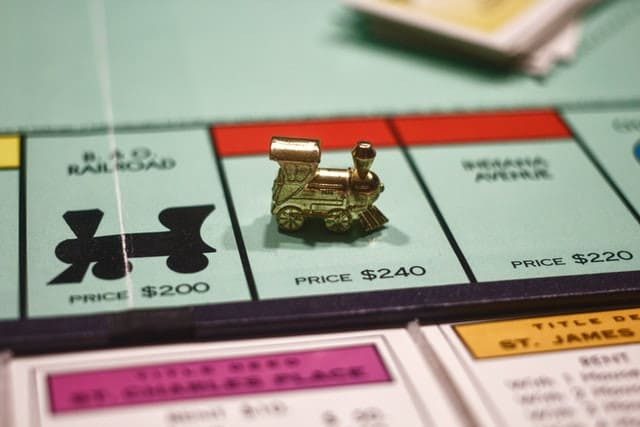
7 min
0
10.04.2022

When it comes to economics, free markets tend to exist in four kinds of states: ideal competition, monopolistic competition, oligopoly, and monopoly. All markets all over the world are subject to these four conditions. Of course, there is bound to be overlap and coexistence, but these are the main kinds of competitive markets we see. However, in this article, we will study what a monopoly market is.
A monopoly happens in markets when there is no competition. In markets like this, the pricing power lies in the hands of a few - meaning the people, whether a group or organization, who are the sole suppliers of the product, set the price.
Price takers can never rise to the level of price makers in this sort of economy without the help of externalities. In this article, we show you how to take the market price back.
Basics of Monopoly
Getting right to the meat of things, a monopoly occurs when there is only one dealer or seller for a specific product distributing it to the people. The absence of other competitive firms allows the monopolistic company to ask for higher prices than usual. Economists believe that if something does not have any close substitutes and an individual vendor rules said market, that this market is a monopoly, and the vendor in question is a monopolist.
Not even the government is above this. There are many government firms acting as monopoly power, for example, cable companies like Tenaga National and the press.
Characteristics of Monopoly
A monopoly market is a sure-fire way to achieve profit maximization. With that in mind, let us take a closer look at the characteristics that make it so.
Single Seller
Let us take an example to understand this. Suppose Parker was the only seller of pens in a country. Everyone in that country would have to buy pens from them. They literally have no other choice. The market share enjoyed by Parker in this hypothetical scenario is a hundred percent. That is profitability worth waging war for.
When a single seller takes center stage, there is no reason for them to give any importance to marginal revenue or cater to the needs of the consumers. It is economic autocracy as it will be the only price maker and everyone else will be a price taker - unable to affect the market price because whatever they do has no impact.
Unique Product Without Close Substitutes
Let's continue with the example. Why is Parker able to get away with it? Perhaps it is because their pens are so good that people only want their products. This could be true, but to be a monopoly, Parker and only Parker would have to be producing pens. Thus, in this hypothetical, they are meeting a very unique need - something nobody else can meet.
Whether by protecting the secrets of manufacturing or by some other trick, the best will remain the best. Eliminating the competition by creating something only they can do.
You can use examples and analogies like these to illustrate your point. If you have trouble coming up with these ideas, there are websites that write essays for you. But even then, you can preserve your unique insights and simply expand on them. This is the trick to you get the best grade.
Barriers to Entry
A monopoly is the ideal of imperfect competition and this reason is why. Going with the example, Parker would not want to lose its profits. Therefore, they would not allow other pen manufacturers to enter the market. And just like that, you retain market power and remain the price maker.
Lack of Competition
Going with the previous point, competition would result in lower prices. Monopolists do not want that. That is why they get rid of the competition. This means that the demand curve for a monopoly company is downward sloping, which ultimately shows the average revenue or price for each and every unit of result sold. Marginal income is additional in total revenue from offering one more product.
Perfect Competition, Monopolistic Competition, Oligopoly and Monopoly
To move away from monopoly, one simply needs to reverse what makes it. The characteristics we discussed in the previous section are the columns that hold up this structure, Take those away one by one, and it falls apart. How do you do that? Well, let's find out!
Number of Sellers
Microsoft is not the only company that makes operating systems. Yes, Windows is popular, but so is Linux. Android leads the pack as far as phones and tablets are concerned. This means that, depending on your needs, there are a lot of sellers out there to give you what you need. And with this, the shackles of monopoly begin to fall off.
All of these sellers will set their prices, and the fight between each will help set the market price. Economies that depend on the interplay of sellers to determine prices are considered healthy.
Difference Between Products
Different producers mean different prices. There will be differences in production, there will be inefficiency, different companies will have different levels of output from each other. There will be no perfect substitutes. Each will have different pros and cons, which means there will be more choices available to every consumer. Product differentiation is a good thing, since it eliminates extremely high prices outright.
Freedom of Entry
In a monopoly, nobody can just decide to start selling something. There are barriers in place to stop them from doing so. These include an exclusive source of information ownership, high start-up cost, and copyrights. The complete opposite of this needs to be achieved in order to throw off monopoly for good. Companies need to be helped and it should be relatively easy to enter the market - provided the company and the product meet the standards of everyone involved in the market.
Ability to Create Price
In monopolistic markets, the monopolist sets the price and that's it. There is no place for price discrimination at all. In a healthy competitive market, the price is set through different companies competing with each other. One company can set the price of their product according to what they see fit, and others are free to do the same. The price thus reached is indicative of the quality of the product. For example, there is a reason why iPhones cost more than Samsung or Sony phones. All of those products have a steady consumer base, so nobody really loses out at all.
Conclusions and Recommendations
The world of macro and microeconomics is as vast as any ocean. There are a thousand things that go into making a market feasible and actually productive. Economies of scale are a very interesting thing. A deadweight loss, differentiated products, and marginal cost are all subjects unto themselves that require proper attention when breathing life into a market structure.
A monopoly, for example, though it is highly profitable thanks to its consumer surplus and supply curve, makes for a very dull economy where everything is the same. Human beings are diverse by nature. Nobody wants one kind of anything. Imagine having to watch only Marvel movies, or drink only Pepsi, or eat only Subway for the rest of your life. It won't be very fun.
And that is why monopoly as a system needs to come to an end. However, don't let all this jargon get you down. We fully understand just how difficult and messy the world of economics can be. If you do not have a clear understanding of everything that goes into it, you will not be able to write a proper paper.
That's where Studybay's homework help comes in! Consider using our economics helpers to refine your knowledge to a sharp point. Then, armed with everything you need to know, you can produce the best paper anyone will have ever seen. We make it easy for students to get the best grades, so contact us today!



